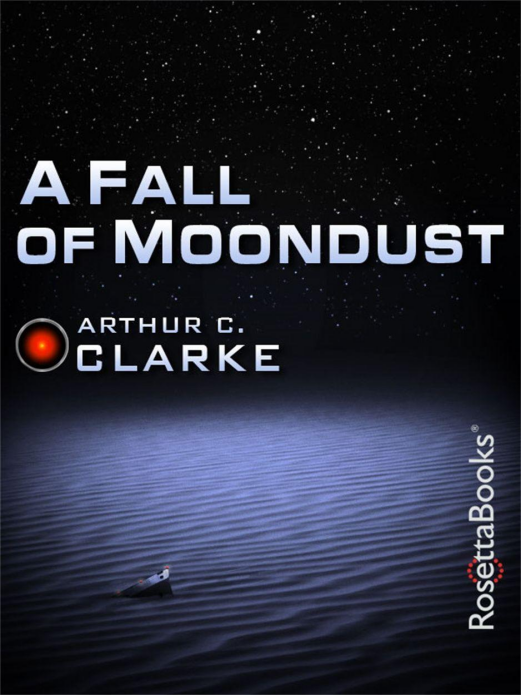Clarke and Lagrange
August 29, 2016 at 10:46 PM by Dr. Drang
I’ve spent a lot of time in airplanes and airports recently, the one benefit of which is catching up on my reading. A couple of days ago, I finally read Arthur C. Clarke’s 1961 novel A Fall of Moondust, which I bought back in April, I believe, when it was on sale for $2 in the Kindle Store. Because of my recent equation-filled post, I smiled when the story mentioned satellites at the Earth-Moon Lagrange points. But I was puzzled to find that Clarke’s nomenclature and calculations didn’t match my expectations.

First, there’s the nomenclature. In the story, there’s a satellite on a line between the Earth and the Moon. It’s used for observation of and communication with the near side of the Moon because it stays in place relative to the Moon’s orbit. This is clearly the first Lagrange point, or L1, of the Earth-Moon system, and yet Clarke gives the satellite the name Lagrange II:
High above the surface of the Moon, from an antenna which, curiously enough, was aimed directly at the face of the Earth, a radio pulse launched itself into space. In a sixth of a second it had flashed the fifty thousand kilometres to the relay satellite known as Lagrange II, directly in the line between Moon and Earth. Another sixth of a second and the pulse had returned, much amplified, flooding Earthside North from Pole to Equator.
Later, he mentions a second satellite that occupies a similar spot above the far side of the Moon. This is the L2 point, but he calls the satellite Lagrange I:
When a ship’s down on the Moon, it can be spotted very quickly from one of the satellites—either Lagrange II above Earthside, or Lagrange I over Farside.
The choice of names can’t be coincidental. Clarke must have intended them to named after their respective points. He even says Lagrange II is
[b]alanced here between Earth and Moon, in a cosmic tight-rope act made possible by one of the obscurer consequences of the Law of Gravitation…
So did Clarke get the nomenclature backwards or has the nomenclature been changed in the past 55 years? I’ve never seen any reference to Lagrange points using Clarke’s numbering, but I still can’t believe he got it wrong. This isn’t just any science fiction author we’re talking about here. It’s the guy who invented the geosynchronous orbit.
With that mystery unresolved, I decided to check up on the 50,000 km distance mentioned in the first quote.
Rewriting one of the equations from my earlier post with a slight change in notation, the equation for the distance from the moon to the L1 point is
where is the distance from the center of the Moon to the L1 point expressed as a fraction of the distance from the Earth to the Moon, and is the mass of the Moon expressed as a fraction of the sum of the masses of the Earth and Moon. From NASA’s Moon Fact Sheet, we calculate and can then solve the equation to get .
The mean center-to-center distance from Earth to Moon is 384,400 km, so the distance from the center of the Moon to L1 is 58,000 km. Subtracting off the radius of the Moon, that puts L1 56,300 km above the Moon’s surface.
I guess I’m a little surprised Clarke would round this number to 50,000, but “fifty thousand” does have a nice sound to it.
Update 09/1/2016 10:08 PM
Look here for the answer to the L1/L2 reversal.
